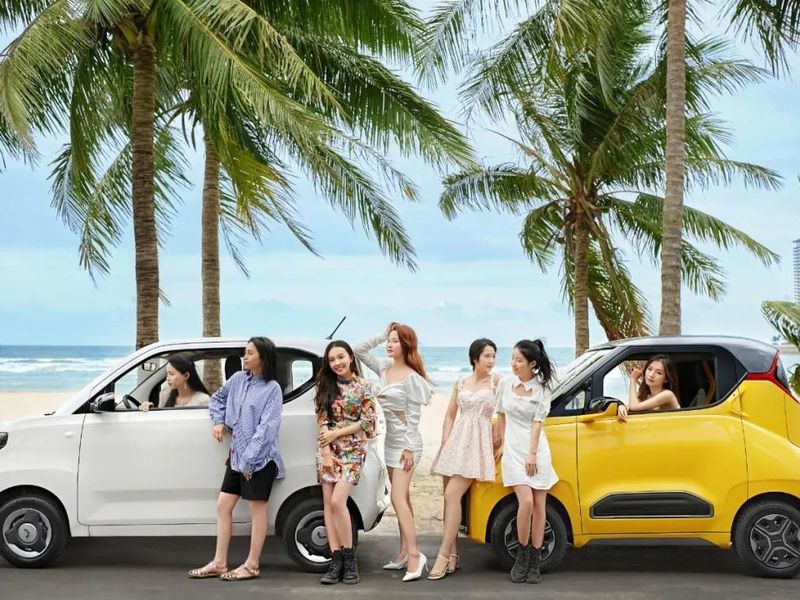
SHANGHAI – China’s light-vehicle market managed to rebound in 2021 after three straight years of decline, aided in part by a shift that has grown nonstop over the years: an inflow of women that is outpacing that of men among licensed motorists.
An increasing number of carmakers in China, spotting the trend, have launched new products to attract female shoppers, notably in the electric vehicle segment.
The population of motorists in China has grown exponentially since private car ownership started to take off in the mid-1980s.
The ranks of drivers even expanded from 2018 to 2020 while the light-vehicle market contracted.
The number of motorists in China increased 11 percent to 456 million in 2020 from 409 million at the end of 2018, according to data released by the Ministry of Public Security.
Notably, the percentage of female drivers has kept ticking up not only in the most recent three-year period, but ever since the ministry began disclosing the tally of motorists.
As of 2021, the proportion of women motorists in China had reached 34 percent, a rise of 1.25 percentage points from the end of 2020 and a jump of 10 percentage points from the end of 2014.
In China, carmakers have long been wary of marketing a product specifically for women.
Such prudence seems to be vindicated by weak sales of cars such as BMW Group’s Mini models and Toyota’s Yaris subcompact sedan, which are widely seen as products that appeal particularly to females.
In 2021, while combined sales of its BMW and Mini brands increased 8.9 percent to 846,237 in China, deliveries of the Mini marque alone only rose 5.2 percent to 30,546.
In the same year, although overall sales at the Toyota brand advanced 9.5 percent to some 1.7 million, Yaris volume slipped 8.4 percent to below 89,000.
However, Great Wall Motor Co. and SAIC-GM-Wuling have launched new products that are breaking the long taboo of openly marketing to women.
Great Wall, China’s second-largest private light-vehicle manufacturer following Geely Automobile Holdings, in 2018 introduced the Ora brand of compact EVs.
In early 2021, the company started to market Ora as “a car brand more in love with women.” To appeal to female shoppers, it refers to the brand’s new series of cute-looking electric crossovers and sedans as the “cat” family.
While Great Wall’s Ora brand targets women in general, SAIC-GM-Wuling, General Motors’ light-vehicle joint venture with SAIC Motor Corp., has been seeking to attract young females with a line of micro electric vehicles under Wuling, an entry-level brand.
Since July 2020, Wuling has introduced three micro EV models: the four-seat MiniEV and KiWi EV, and the two-seat NanoEV.
In addition to clever – some say lovely – model names and futuristic design, the three micro EV models are presented in colors such as cream, rouge and yellow, with the apparent purpose of winning the hearts and appeal of young female customers.
Such branding and product strategies have so far worked well for the two brands.
In 2021, Ora sales surged 140 percent to approach 135,000.
As of December, Wuling had delivered some 750,000 MiniEVs, KiWi EVs and NanoEVs. The number includes 55,729 MiniEVs, of which more than 60 percent were sold to women born after 1990, according to SAIC-GM-Wuling.
Led by early success at Great Wall and SAIC-GM-Wuling, two other major Chinese carmakers – Chery Automobile Co. and Changan Automobile Co. – are rolling out new EV products with young women as target customers.
It will only be a matter of time before more global car brands get on the bandwagon.